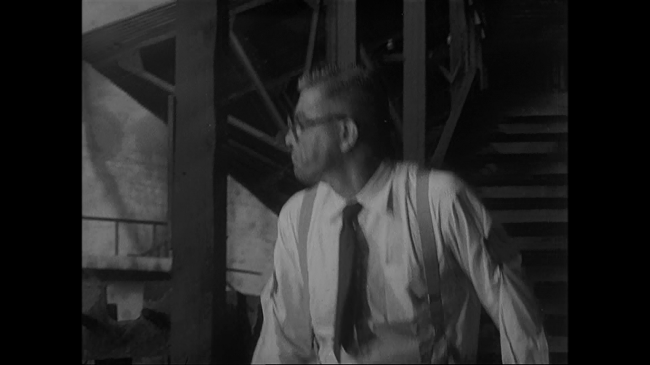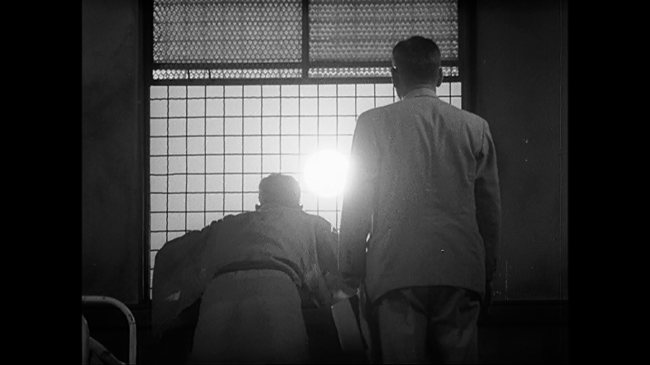Recently I have been accustomed to begin doing ‘marathons’ for directors, actors, anyone really. About a week ago I did a Akira Kurosawa marathon, and the reviews for that are on my channel, but I wanted to talk to you today about my exploration through Sam Peckinpah’s western filmography.

Bring Me the Head of Alfredo Garcia (1974) ****
This was my first real Peckinpah film, and although it is not strictly a ‘western’, it does hold the mould (if you’ll pardon the rhyme) of a traditional western turned on its rather run down and sleazy head. We meet a man who has been playing piano, Benny, played in a superb fashion by the ever fantastic Warren Oates, who has been hired to go out and try and find the grave of a man who has knocked up the local big cheese’s daughter. What ensues is a wildly violent and bloody portrayal of a man on the edge (sound like a certain 1970 film??? wink wink Straw Dogs nudge nudge). We do that classic Peckinpah style of shootouts little but when they happen they come bloody as hell and the body count is not exactly a low one either.
Warren Oates’ performance shall get a paragraph of its own, it is a shining light in the pantheon of great 70s performances, nearly up there with Robert De Niro as Travis Bickle, Al Pacino as Michael Corleone or Jack Nicholson as Randall P. McMurphy. He portrays this character, a man who has nothing but a whore and a head, with such stark madness and reality that it is almost frightening, a truly stunning performance and it is a sad thing that we never saw too much of Warren Oates taking the lead role in a film, because I do believe he was a potentially great actor and Bring Me the Head of Alfredo Garcia is living proof of this.
The shoot-outs are unflinchingly graphic, just as a good Peckinpah western should be, and we do not get that near poetic feel that we realise in Pat Garrett and Billy the Kid or The Wild Bunch, no, Bring Me the Head of Alfredo Garcia is a film that strips all of that away and brings us a harsh reality, it must be one of the most gritty and dirty films ever made.
The head of Alfredo appears to be something of a shrine to Benny, and it is a clear piece of symbolism by the ever challenging Peckinpah, although not something in the vein of Tarkovsky or Angelopoulos, more regular. But still something that we don’t clearly understand like we understand the clear message of The Wild Bunch, or of Ride the High Country. And in that sense I will make the bold statement of saying that Bring Me the Head of Alfredo Garcia is the most challenging and thought provoking Peckinpah film I have seen, it really gets under your skin with its intense, gritty shoot-outs and it pulsating lead performance. A four star film for me.

Pat Garrett and Billy the Kid (1973) ****
But before Bring Me the head of Alfredo Garcia there was this, the final ‘true’ ode to the western by Sam Peckinpah, while some would debate that goes to Bring me the Head of Alfredo Garcia, I will happily state that this is Peckinpah’s most passionate film. This film is a poetic western, and, at times a visual masterclass in grit and sweat. It is not a pretty western with a bow on top that people were used to see twenty years earlier, Pat Garrett and Billy the Kid was possibly the last film of the western era. After then it all went downhill, but this is certainly a film fitting for the mould of ‘the last true western’. It is a film about the deterioration of the west, Billy is a product of that old west and he clearly is representing the way it is fading, no longer that free spirit. It is a spirited performance from Kris Kristofferson, an actor I am very keen on (see Heaven’s Gate is you liked his performance), one that is full of youthful life that is soon to be taken away, and the more I think about Pat Garrett and Billy the Kid the more I begin to think that possibly on rewatches this may become one of my favourite westerns.
The harsh brutality of some of the shoot-outs is at times shocking, and the actions of James Coburn’s character, Pat Garrett (the man who is trying to kill Billy, but has always been friends with him) are angering but it is a stunningly well directed film from Sam Peckinpah, his best in that aspect, and one you cannot help but sit back and admire for it’s eloquence at least.
It is fitting that this should involve a cast packed with great character actors, most notably Richard Bright (The Godfather, The Godfather Part II, The Godfather Part III, Once Upon a Time in America) and Jack Elam (Once Upon a Time in the West, The Comancheros) who is just a fantastic actor, whatever he is in. It is a farewell fit for a king at times, and although the plot can seem messy and occasionally the pacing is not quite on the mark, Pat Garrett and Billy the Kid is a brilliant tribute to the west by Peckinpah, 4/5.
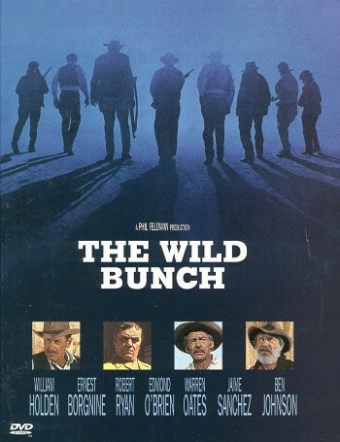
The Wild Bunch (1969) *****
The Wild Bunch is a classic american film, one of such fame and valour that it was impossible to ignore this one. This is a film about honour, about losing all that you gained, some would even argue it is one about trust lost and found. Certainly after viewing this one I can see why so many do call it Peckinpah’s finest achievement, it is a western that captures pretty much everything I love about westerns and so many others in the world do.
Just that final shoot-out and that opening shoot out on their own make this film such a treat, but the dialogue is witty, the characters have hearts, and we do hate those bad guys.
After seeing this film I was just stunned at how well made it was, and how well edited. A good friend of mine told me that Peckinpah never spent much time in the editing room but i do find that somewhat hard to believe after seeing the mastery of editing that went into the shoot-outs especially, they are so well done so that we really have a crazy atmosphere.
Borgnine is a great actor, there is no doubting a statement like that, and in this film he gives the dynamite performance, but the truth of the matter is that everyone in this film manages to really get behind their characters, everyone plays a key part. And that is something I like about The Wild Bunch, it really is a bunch, not just five or six men in which four of them only speak once, it is a truly a film where there are so many lead roles, my other favourite performance would come from the hilarious Edmond O’Brien, such a wonderful actor in his time.
Peckinpah clearly did like to bring back actors who were fading, or use great character actors and use them well, and you could say that The Wild Bunch was a big risk in that respect, but I think it is a risk that payed off well to produced a dirty and grittily polished western.
Something that was not to be expected from this film was a situation in which there were three main ‘teams’ which is something very very rare, almost unheard of. But it is handled in such a way that is fulfilling to the story, and emotionally connective.
THIS NEXT PARAGRAPH CONTAINS SPOILERS: The fact that it is the child who eventually kills Holden is funny, as this is a film about the men who shaped the west dying and the new breed coming along, and that is just what happens, the new breed kills the old heroes, and it works. END OF SPOILERS
The Wild Bunch is certainly Peckinpah’s crowning achievement he mixes everything into the pot and it comes out as a delicious blend of violence! 5/5
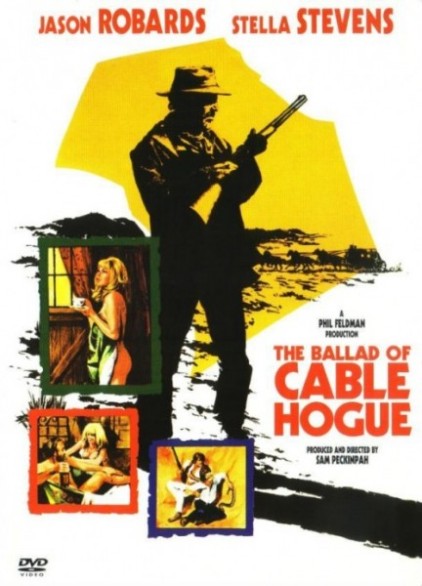
The Ballad of Cable Hogue (1970) ***
After the manic western The Wild Bunch, Sam Peckinpah made this little western, a film about a man, and that is it, and the new way literally destroys him. Cable Hogue, played with incredible charm and wit by Jason Robards (Cheyenne in Once Upon a Time in the West) is robbed by two men in the desert, and so he is left to wander for three days without anything except his rags. He stumbles across a waterhole, which he digs deeper and eventually uses as a means of drinking source, and tries to sell this water to thirsty travellers who are moving along the road that runs straight by this hole. Along the way Cable meets lots of motley souls, some in good health and others not.
This is an interesting concept for Peckinpah, but one I felt he didn’t feel very comfortable with, there is an awkward presence about his direction in this film that does not work as well as it does in his earlier films like The Wild Bunch or like his later film Pat Garrett and Billy the Kid. I feel that Peckinpah directs this one very strangely, he doesn’t work with humour like Sergio Leone does, he tries too hard at making it weird, quirky and funny and in the end it just feels like a rather awkward attempt at a story that could have been fantastic.
However, it is a funny film at points, for example, when Hogue receives his land permit he does a gleeful little jig outside of the office that did make me laugh and smile, but most of the essence of the humour in this film comes from two very spirited performances from Jason Robards, as Cable Hogue and David Warner as a reverend who has made his own church that follows him everywhere (this man turns out to be Hogue’s friend).
The way that Peckinpah edits this film is not in line with the mastery of editing that we saw in The Wild Bunch, and you can certainly tell that this film is cheaply made, whereas in The Wild Bunch or Bring Me the Head of Alfredo Garcia we do feel as if we are watching a very expensive production. It is a film that feels primitive, subdued almost, and I was disappointed by the potential that this film could have had, but didn’t.
The main thing that bugs me, however, about The Ballad of Cable Hogue is the fact that this romance that plays out between a whore, played AWFULLY by Stella Stevens and Cable just doesn’t work, it feels forced, cringey at times. There is nothing of the Ride the High Country splendour that came between the man and the woman, this is a romance that has no chemistry, and this is mainly because of this dreadful performance.
That being said, the scenes in which the romance does not take place and Stella Stevens is not onscreen, although that is a very small section, is marvellously done. The opening sequence does give us a light into what Peckinpah always was, it is gritty, dirty, uncomfortable, but it is ultimately Peckinpah and it works to a tee, the last showdown is also brilliantly and imaginatively done, the suspense builds and the humour actually works in these sections of the story.
But with The Ballad of Cable Hogue I was left disappointed, it is a film that has no substance to it other than a couple of scenes and a fantastic Robards performance, not this time, Mr Peckinpah. 3/5
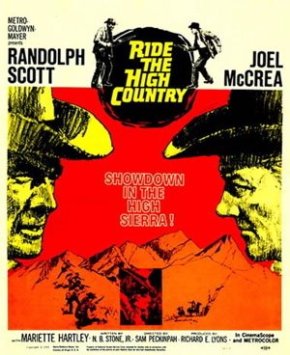
Ride the High Country (1962) ****
Ride the High Country was Sam Peckinpah’s second film, and already he had stars like Randolph Scott and Joel McCrea at the helm! In this film we follow these two men, and a young recruit that Scott’s character has brought along, as they guard a gold shipment from a mining town, but along the way they meet a young girl who wants to go away from here Father and marry a man who happens to live in this town. The young recruit takes a liking to the girl (Mariette Hartley) but the girl has her eyes set on marrying this man in the mining town. Things don’t exactly go to plan from then on.
This film focuses on one of Peckinpah’s favourite themes in westerns, the dying west. But in this film we are not so much focusing on the dying west but the men who are dying in the west. Joel McCrea and Randolph Scott both have this down as their final job, their last hurrah before they up shop and go to leave a peaceful life. In that sense it does serve as an allegory, Peckinpah says with this film that the men are dying but the west is not, the west refuses to die, and that is something he would backfire against later.
The beauty of Ride the High Country comes in it’s final third. This is a 90 minute film and I would split it up into the first hour and the last half hour. At about an hour into the film I was thinking to myself ‘this is a very cliched, unimaginative, undeveloped story about people we do not care about, it is just a normal film’. I think I was completely justified to have that reaction, the first hour of the film is just a plain ‘ole romp that has nothing of note in it, it was just something I saw but not something I loved, save for the beautiful photography by the master Lucien Ballard.
Even Peckinpah’s direction seems restrained in the first hour, it is hesitant, so unlike what we would later see in someone like him, with films like The Wild Bunch and Bring Me the Head of Alfredo Garcia.
In the first hour we do not care about the characters, we do not feel for them, and to be honest, we don’t know what to feel for the main characters because they are largely undeveloped, but then in the last half hour we see a change in the mood, Peckinpah is unleashed.
In this last act of the film we really see a change in mood, it becomes visual poetry, the shoot-out scenes are so visceral, and extravagantly shot! We see the true side of all of these characters and we understand their actions, we begin to feel for them and their intentions. The dialogue sharpens up, the narrative is driven to a whole new dimension, and this last half hour may be the greatest ever stretch in a Peckinpah western. The performances suddenly have life breathed into them, before McCrea and Scott were just two old rustlers, now they are serious characters with intentions. It is sharp directing, the conclusion is shot with such confidence that you would feel someone else has directed the film.
The young woman, Mariette Hartley, gives a very fine performance as the farm girl as well, it is nothing like the annoying performance that you may expect from a film like True Grit (that isn’t her acting in True Grit but it is a similiar style performance), it is a confident but not overly proud performance that knows it place.
I think Ride the High Country is a good film, but you can’t give a film 5/5 if the first two thirds of the film are 3/5 quality, but the last half hour is early tellings of Peckinpah’s later genius and mastery of the western genre. 4/5
So, what is my overall verdict of Sam Peckinpah’s westerns?
Peckinpah made some fantastic westerns that will go down as american classics, his mastery of the well edited shoot-out was something very few other directors could do, but he never quite mastered the humorous side of the western, a key attribute of the genre. He was no Sergio Leone but still a key figure in the new wave western.
Thank you very much for reading!

